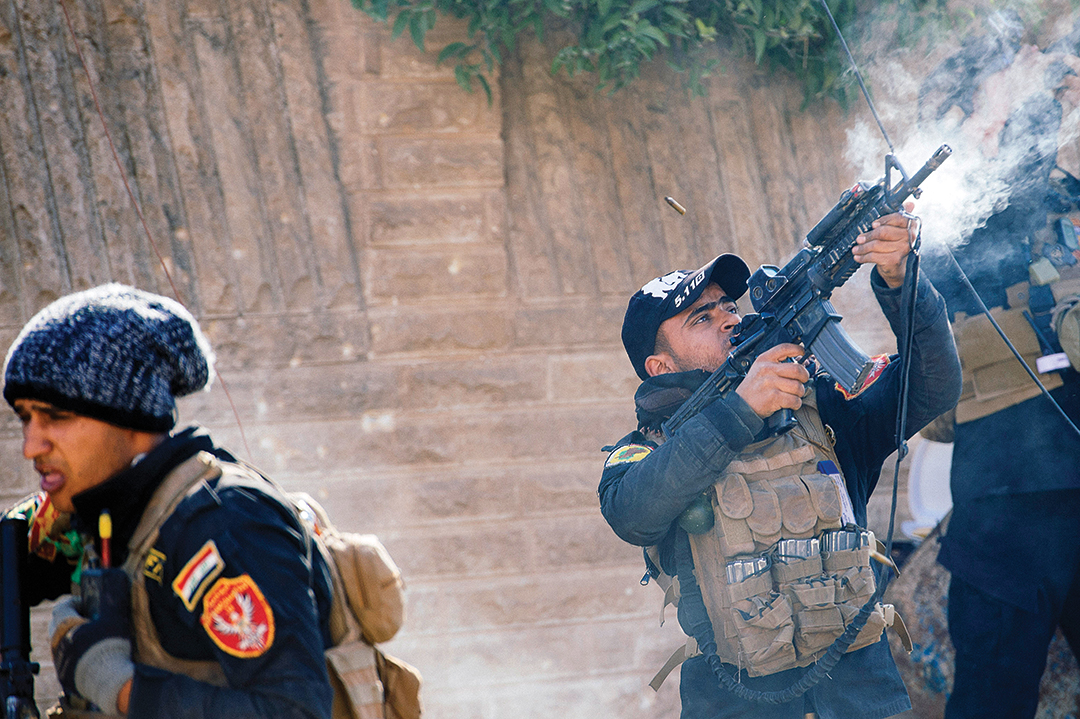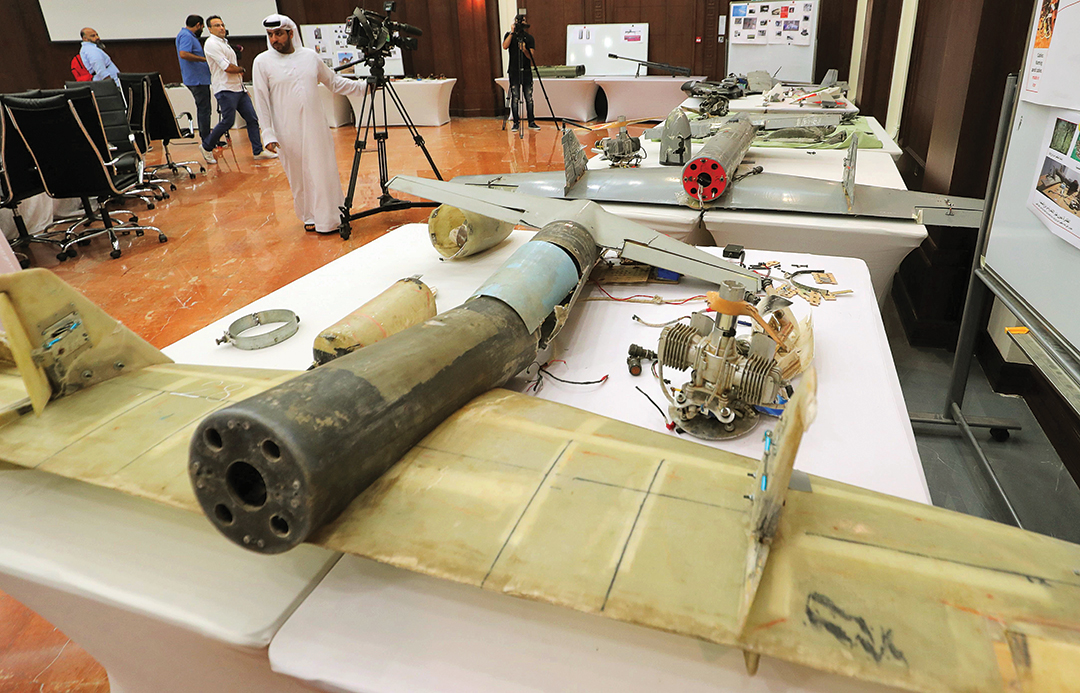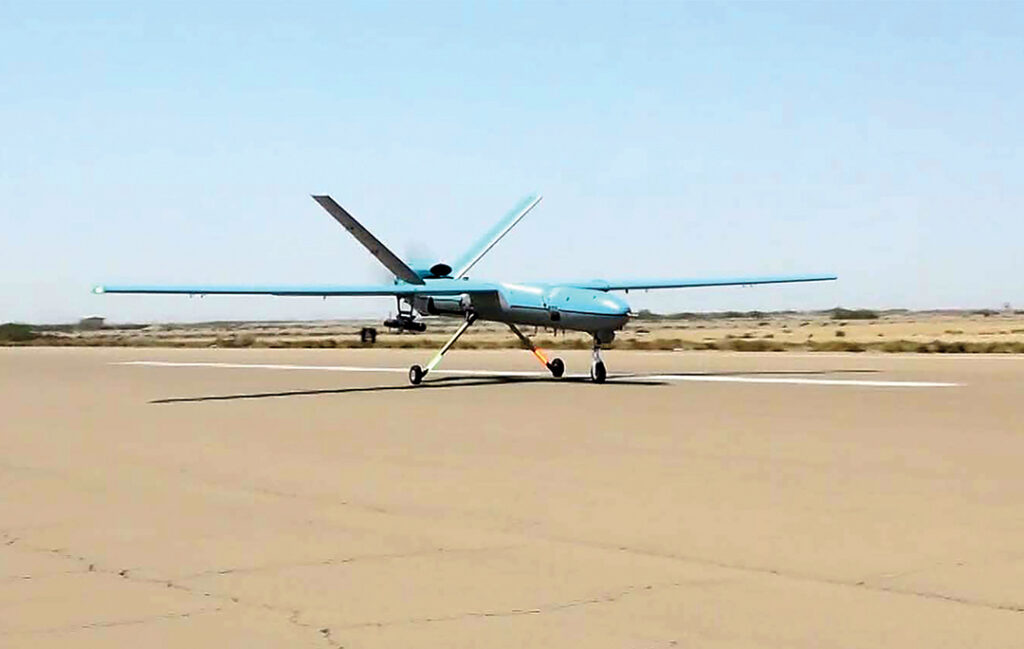Issam Abbas Amin
General Directorate for Intelligence and Security of the Iraqi Ministry of Defense
Unmanned aerial systems, or drones, pose a new challenge in conflict management as an emerging weapon that states and armed groups are finding useful. It appears that drones will change the nature of warfare, or at least will change low-intensity conflict. In 2020, drones were the tactical weapon of choice in the conflicts raging in the Middle East. It is notable that states sponsoring terrorism are the main beneficiaries of this weapon and that their use constitutes a potential challenge to the regional balance of power.
Drone warfare has become widespread since the United States deployed its Predator aircraft in Afghanistan following the September 11 attacks in 2001. The U.S. has possessed drone superiority, but the low relative cost of such systems makes them attractive to malicious actors in the Middle East. The gap is shrinking between the U.S. and these malicious actors accompanied by their supporting extremist groups.

The Battle of Idlib in Syria revealed a new role and combat doctrine, with the core focus based on drones changing the balance of power on the ground. Turkey launched its main offensive of about 100 locally produced drones that fired cheap guided munitions with lethal efficiency. The Syrian regime lost at least two fighter jets, eight helicopters, 135 tanks, 77 armored vehicles, and had 2,500 casualties before the battle ended, according to the Turkish Ministry of National Defense. The attack left the Syrian Army unable to protect its arsenal and artillery units on the front lines, which were systematically targeted with cheap but high-precision missiles from Turkish drones.
As a NATO official said: “Dozens of these drones flew over Idlib, dropping these bomblets on the Syrian regime throughout the night, drawing the attention of Russian President Vladimir Putin.” The Turkish drones were able to dominate the air, and this was repeated in Libya and the Armenia-Azerbaijan conflict.
In Libya, the Turkish drones thwarted an attack on Tripoli, and the Government of National Accord turned from a defensive to offensive posture to pursue the forces of Field Marshal Khalifa Haftar toward the strategic outskirts of Sirte. The same situation was repeated in the Caucasus, where Azerbaijan, using drones, took over territory claimed by Armenia for more than 20 years.

AFP/GETTY IMAGES
In the cases of Libya, Idlib and Azerbaijan, the effectiveness of drone usage was validated. In these three theaters, Turkish experts appeared to use a common tactic of jamming systems, and drones commenced their attacks by targeting air defense systems, even if some losses were suffered. This allowed the drones to attack military targets on the ground with fewer losses after neutralizing the adversary’s air defense, making their tanks and armored vehicles easier targets.
These examples raise the question: Should such tactics lead to strategic reevaluations?
It is preferable to respond here with the shocking attack on the Saudi Aramco facility in September 2019, which temporarily halted 6% of global oil production. The Aramco attack — combined with Houthi attacks against Saudi Arabia and the United Arab Emirates — indicated a significant development in Iranian or its allies’ drone capabilities.
What is striking here is Iran’s prowess in operating a large number of drones — approximately 50 — during a military exercise in July 2019. The Iranians also demonstrated a significant capability when they took control of a sophisticated U.S drone that fell on their territory and created a replica to suit their requirements.
Some assessments rate the effectiveness of drone attacks at 85%. This is a high percentage and demonstrates the technology’s sophisticated capability and high reliability. Such attacks could also target infrastructure such as power stations and weapons manufacturing plants.
So, we are facing a new situation in conflict management, which is the capability of drones to surprise even the most advanced military nations. So far, it has been proved that in the confrontation between costly air defense systems and low-cost offensive drones, the drones come out on top, especially with the correct tactics. Reports have suggested that Turkish drones used by Azerbaijan neutralized the well-known S-300 missile system, which is a key air defense system for many countries, including Egypt, India, Iran and Syria.
Even the more sophisticated S-400 missiles deployed in Syria have proved ineffective against the combined use of electronic warfare, anti-radiation missiles and precision-guided munitions. Even a country such as Saudi Arabia, which has a high density of sophisticated air defense systems, the majority of which are Western, found it difficult to repel the 2019 drone attack on Saudi Aramco facility.
The world is facing a new and difficult challenge to the strategic balance in the Middle East after these low-cost, high-impact technologies found their way to terrorist organizations in Iraq, Libya and Syria.
In the face of this challenge, modern warfare is experiencing more covert terrorist attacks. In recent years, drones have become a major weapon for organizations and military forces, especially in the Middle East, but their use has varied between legitimate and illegitimate. The key factor that drives commanders to use this type of weapon is its ability to evade radar and the deniability with which it can be deployed. This has been observed, for example, in attacks on Iraq’s Erbil International Airport.
The world should pay attention to the implications of drone use in the Middle East. It has the potential to alter the regional military balance of power and encourages death and destruction at a low cost with a high margin for denial.
We regret to report the death of author Issam Abbas Amin. His passing is a great loss for Unipath readers and the Intelligence and Security Directorate of the Iraqi Ministry of Defense.

